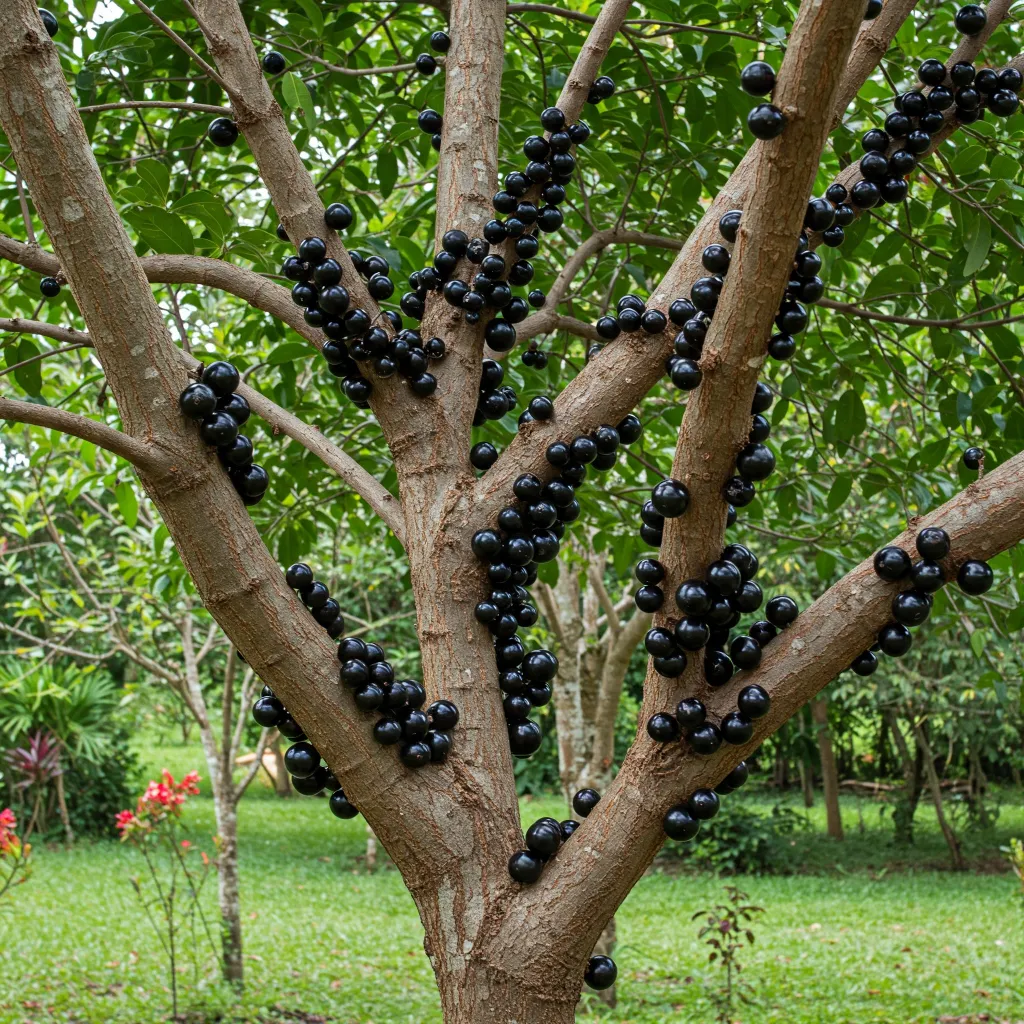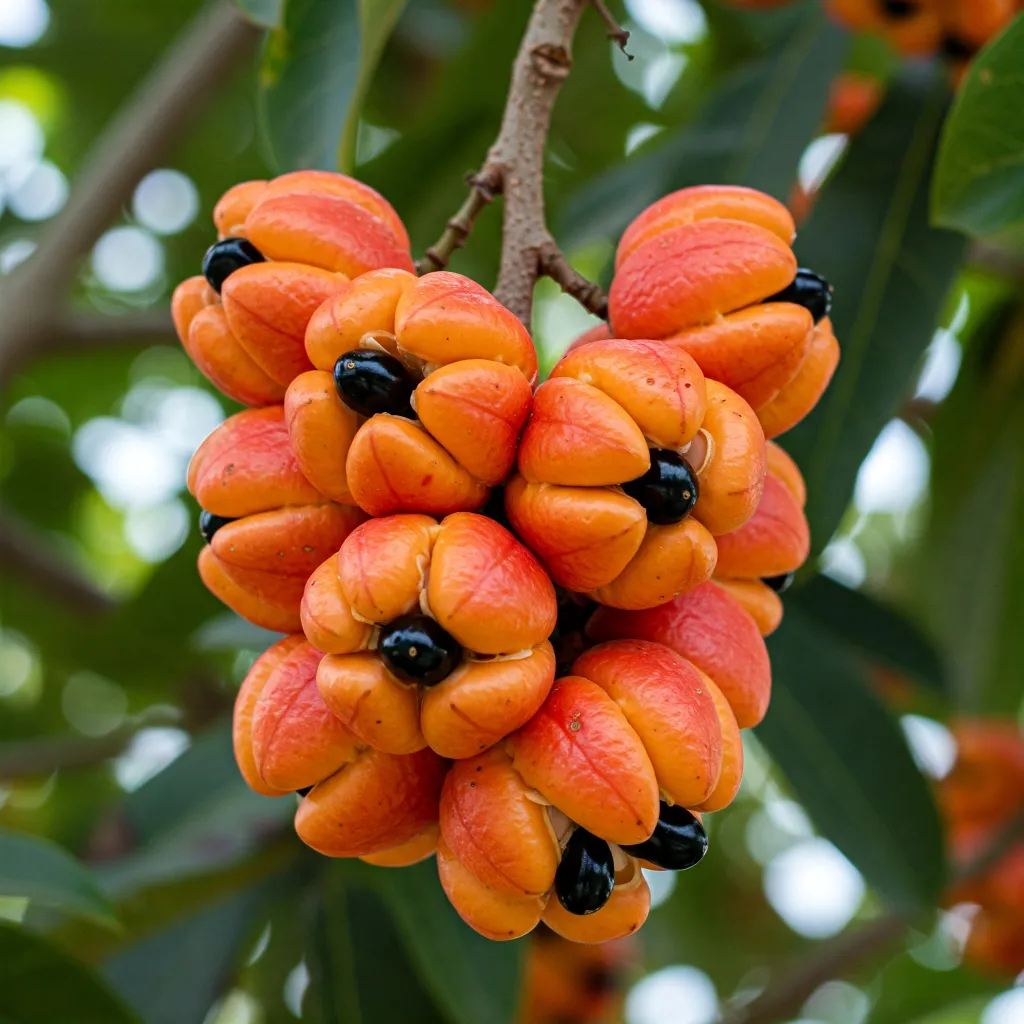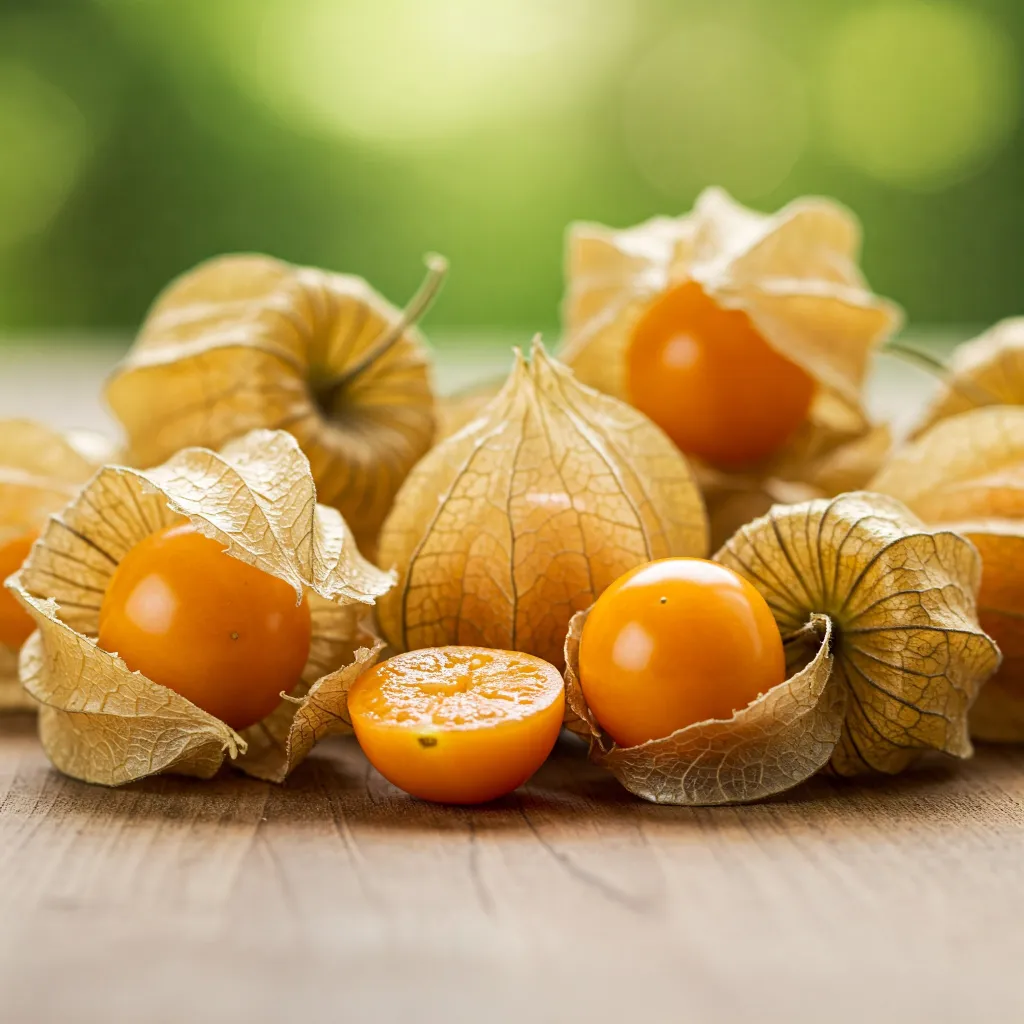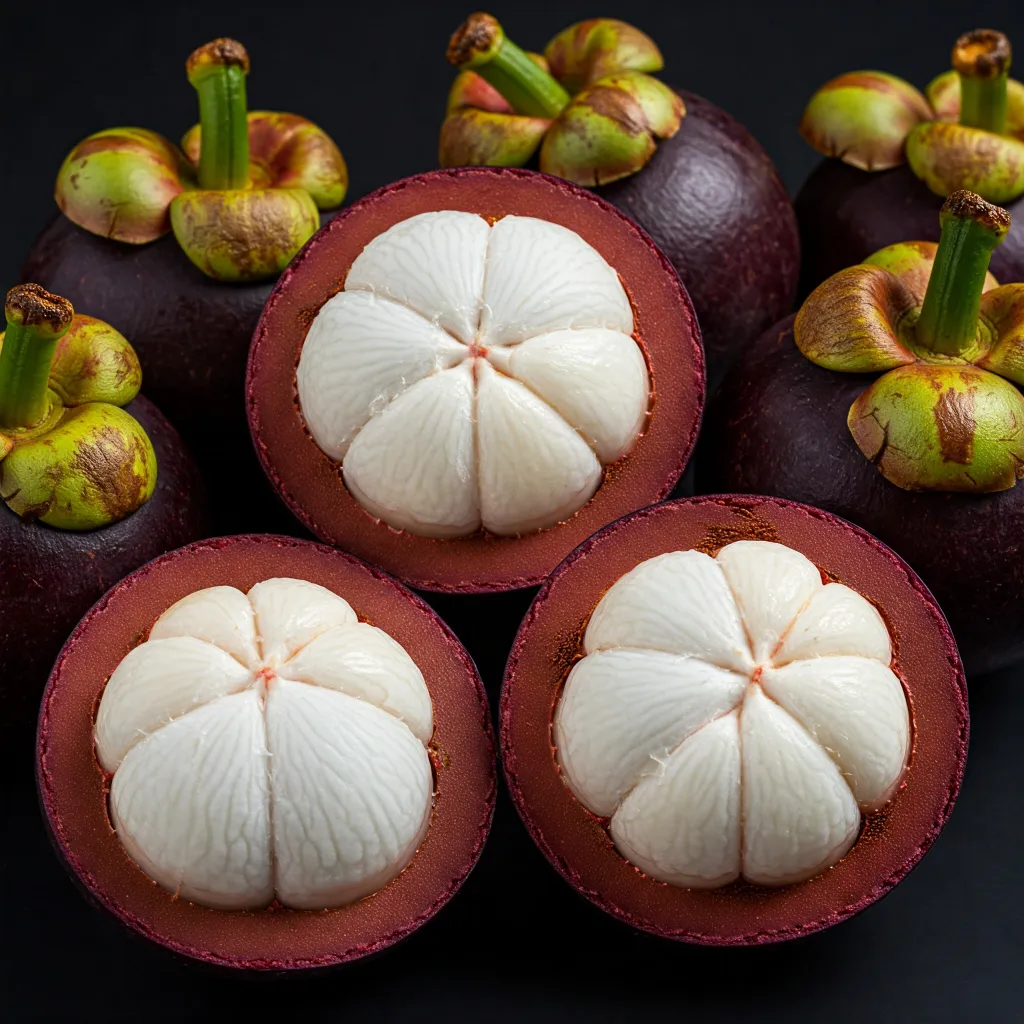🤯 Top 10 Strangest Fruits Around The World You've Never Heard Of!

Beyond Apples and Bananas - Prepare to be Fruity-Fied!
Think you know fruit? Think again! The produce aisle at your local grocery store is just the tip of the iceberg when it comes to the wildly diverse and often bizarre world of fruit. From spiky exteriors to flavors that defy description, nature has concocted some truly strange and wonderful edible creations.
Forget your everyday apples and bananas, because we're about to take a whirlwind tour of the top 10 strangest fruits from around the globe. Get ready to have your fruit preconceptions delightfully shattered as we dive into a world of flavors, textures, and appearances you've never imagined. Prepare for a fruity adventure that will leave you craving the wonderfully weird!
1. Jabuticaba: The Grape That Grows on a Tree Trunk

Imagine a tree trunk bursting with grapes! That's Jabuticaba, a Brazilian fruit that defies typical fruit-growing norms. Instead of hanging from branches, these purplish-black fruits sprout directly from the trunk and branches of the Jabuticaba tree. Looking like something straight out of a fairytale, Jabuticabas have a sweet, white pulp similar to grapes, often described with subtle floral notes.
They are enjoyed fresh, made into jams, or even fermented into wine. Beyond its unique growing habit, Jabuticaba is packed with antioxidants and vitamins, making this strange fruit as healthy as it is visually stunning. Finding them fresh outside of South America is rare, making them a truly exotic treat.
2. Buddha's Hand: The Citrus Fruit That Looks Like Fingers

Resembling a gnarled hand with long, citrusy fingers, the Buddha's Hand citron is a fruit that’s as intriguing to look at as it is to use. Originating in Asia, this fragrant fruit is almost entirely rind and pith, with very little pulp. It's not typically eaten raw, but its zest and fragrant peel are highly prized in cooking and perfumery.
The intense citrus aroma is used to freshen rooms and clothing. In some cultures, particularly in Asia, it's a symbol of happiness, longevity, and good fortune, often given as a religious offering or New Year's gift. Its bizarre appearance and captivating fragrance make Buddha's Hand a truly unforgettable fruit.
3. Durian: The King of Fruits (and Stinky Reputation)

Love it or hate it, Durian is undeniably strange. Nicknamed the 'King of Fruits' in Southeast Asia, it's famous (or infamous) for its potent, pungent aroma that many describe as overwhelmingly offensive – likened to sewage, gym socks, or rotten onions!
Despite the smell, durian's creamy, custard-like flesh is considered a delicacy by its devotees, boasting a complex flavor that's both sweet and savory, with hints of almond, cheese, and onion. Its spiky, formidable exterior adds to its alien-like appeal. Durian is so pungent that it's banned in many public spaces in Southeast Asia. Dare to try the fruit that divides nations?
4. Salak (Snake Fruit): Scaly Skin, Sweet Surprise

Don't let the scaly, reddish-brown skin of the Salak, or Snake Fruit, deter you! Native to Southeast Asia, this fruit's exterior truly resembles snake skin, giving it a reptilian appearance. Peel away the scales, however, and you'll find creamy, yellowish-white segments with a unique flavor profile.
Descriptions vary wildly, from sweet and acidic with hints of pineapple and banana, to nutty and even slightly alcoholic. The texture can range from crisp to slightly granular. Salak is often eaten fresh, pickled, or used in desserts. Its unusual look and complex taste make it a truly adventurous fruit to try.
5. Ackee: Delicious and Deadly (If You're Not Careful!)

Ackee, the national fruit of Jamaica, is as culturally significant as it is potentially dangerous. When ripe, the ackee fruit bursts open to reveal creamy, yellow arils that have a mild, nutty flavor, and are a key ingredient in Jamaica's national dish, Ackee and Saltfish.
However, unripe ackee contains hypoglycin, a toxic substance that can cause 'Jamaican Vomiting Sickness,' a potentially fatal condition. Only the ripe arils are safe to eat, and must be carefully prepared. This fruit's dual nature – delicious and deadly – makes it one of the strangest and most intriguing fruits on our list, demanding respect and careful handling.
6. Rambutan: Hairy on the Outside, Sweet on the Inside

Resembling a vibrant red sea urchin, Rambutan is a Southeast Asian fruit instantly recognizable for its hairy, spiky rind. Don't be intimidated by the exterior! Peel away the hairy shell to reveal a translucent, white or pale pinkish flesh that's sweet, slightly acidic, and incredibly juicy, similar in taste and texture to grapes.
Rambutan trees are beautiful and ornamental, and the fruit is enjoyed fresh, in desserts, or canned in syrup. Closely related to lychee and longan, rambutan offers a uniquely hairy and delicious fruit experience that's both visually striking and refreshingly sweet.
7. Cherimoya: The Custard Apple That Tastes Like Bubblegum

Mark Twain famously called the Cherimoya 'the most delicious fruit known to man,' and for good reason! This heart-shaped, green fruit, often called Custard Apple due to its creamy texture, boasts a flavor that's a complex blend of tropical delights. Imagine a mix of banana, pineapple, mango, papaya, and even bubblegum!
The sweet, white flesh is dotted with inedible black seeds. Cherimoyas are enjoyed chilled and eaten with a spoon, or used in smoothies and desserts. Native to the Andes Mountains, this fruit's incredible flavor complexity and creamy texture make it a truly extraordinary and strange culinary experience.
8. Physalis (Cape Gooseberry): Lantern-Like Wrappers, Tangy Jewels

Physalis, also known as Cape Gooseberry or Ground Cherry, are small, golden-orange berries encased in papery, lantern-like husks. These delicate wrappers are not just for show – they protect the fruit as it ripens. Inside, you'll find small, juicy berries with a tangy-sweet flavor, often described as a mix of pineapple and tomato.
Physalis are enjoyed fresh, in salads, jams, or dipped in chocolate. Their beautiful presentation and unique sweet-tart taste make them a delightful and unusual fruit to discover, adding a touch of whimsical charm to any dish.
9. Mangosteen: The Queen of Fruits (and a Royal Mystery)

Often hailed as the 'Queen of Fruits,' Mangosteen is a tropical delight with a deep reddish-purple rind and snow-white, segmented flesh inside. Its flavor is exquisitely balanced – sweet, tangy, and slightly floral, often described as a combination of strawberry, peach, vanilla ice cream.
For years, mangosteen was banned in the US due to fruit fly concerns, adding to its mystique. The thick rind is inedible, but the delicate segments inside are a true delicacy, enjoyed fresh and in desserts. Mangosteen's regal reputation and delicious, complex flavor make it a truly strange and sought-after fruit experience.
10. Kiwano (Horned Melon): Spiky Exterior, Jello-Like Interior

Looking like something from outer space, the Kiwano, or Horned Melon, is a golden-orange fruit covered in spiky horns. Native to Africa, this fruit's bizarre appearance is matched by its unusual interior. Inside the tough rind, you'll find a vibrant green, jelly-like flesh with edible seeds.
The flavor is mild and refreshing, often compared to a mix of cucumber, lime, and banana. Kiwano is low in calories and rich in Vitamin C, making it a healthy and hydrating snack. Enjoy it straight from the rind, or use its pulp in salads and drinks. The Kiwano's otherworldly appearance and refreshing taste make it a truly strange and fascinating fruit to explore.
Comments
Loading comments...